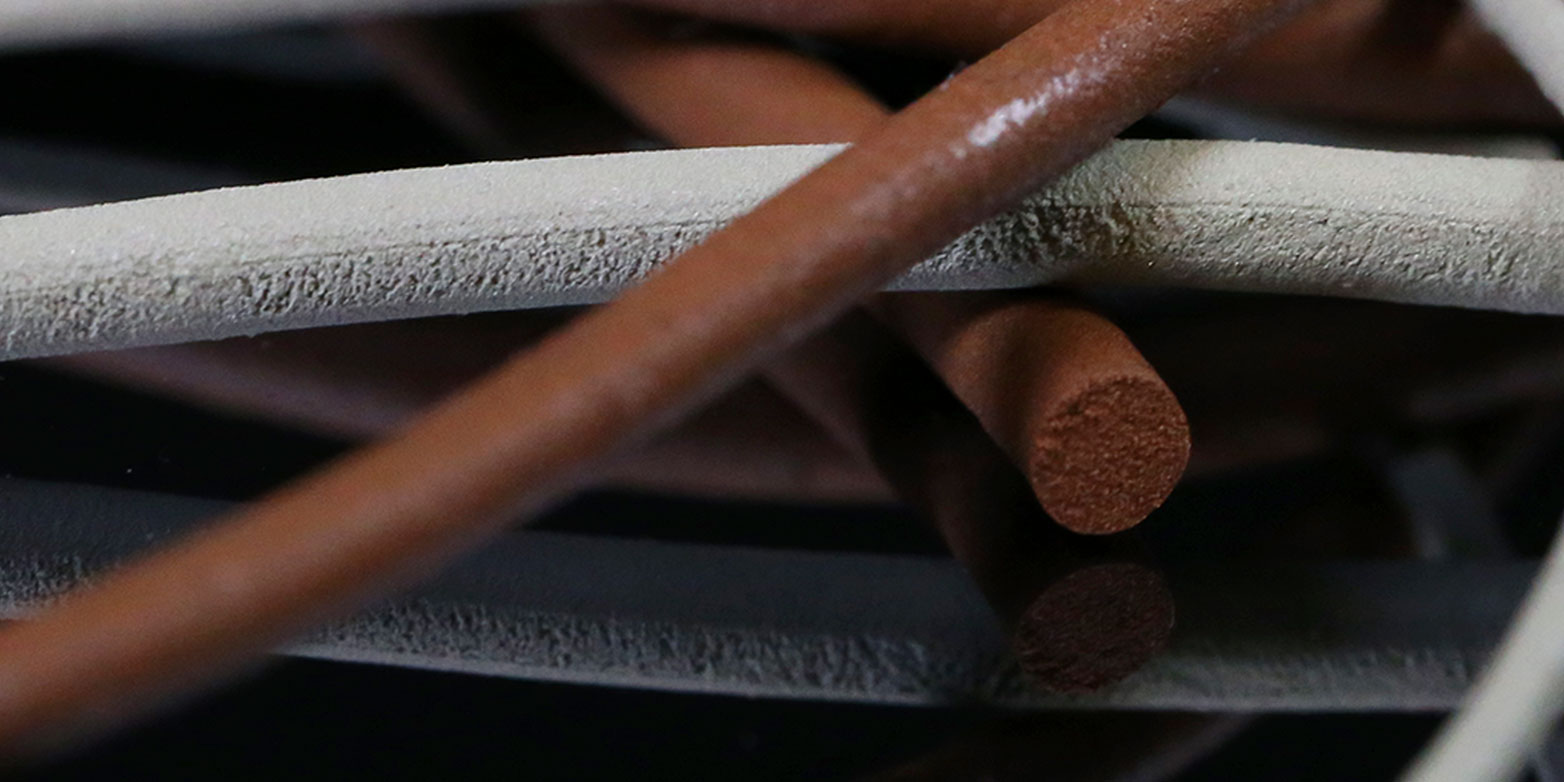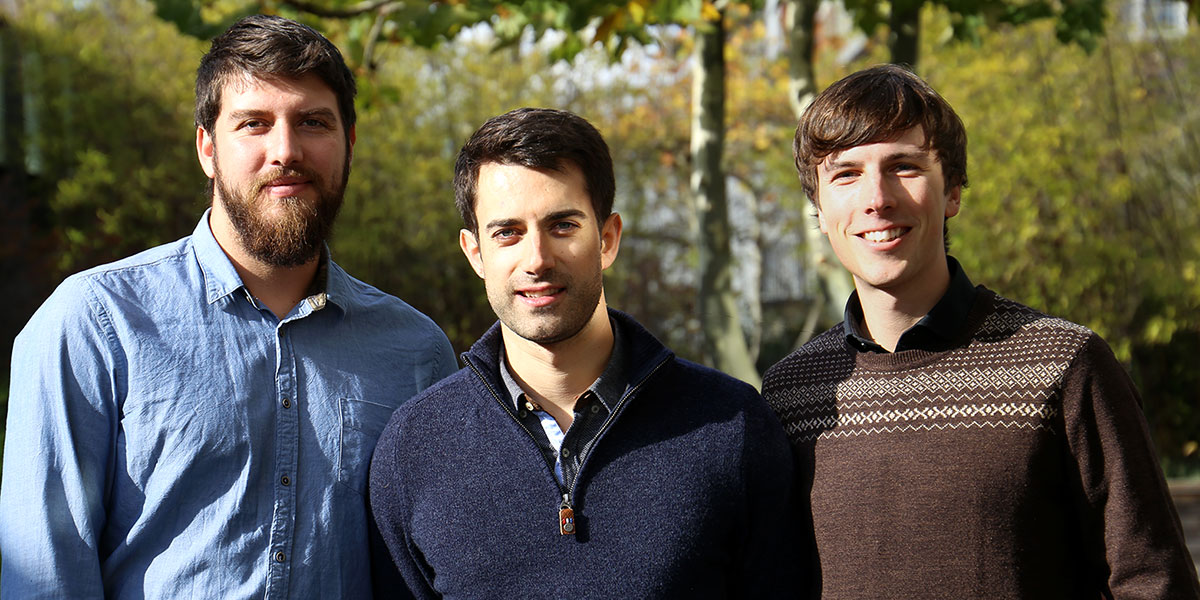Making the cable industry a little sexier
ETH engineers Vincent Martinez and Luca Hirt are on a mission: to make cables more durable and reliable. This could potentially lead to unbreakable headphone cables, shaking up an industry known for its slow pace of innovation.

It’s not easy to get people excited about cables, but Vincent Martinez has managed to do so. At the Start Summit in St. Gallen – one of Switzerland’s biggest and most important gatherings for start-ups – the pitch he gave for his company “external page nanoleq” won him a prize of 20,000 Swiss francs. “But our business is not sexy”. What does he mean by this? – While all the buzz at the conference was about tech innovations such as blockchain or virtual reality, the ETH engineer was presenting what may initially seem a rather old-fashioned concept: much more durable cables.
Shaking up a market worth USD 300 billion
nanoleq is the name of the company that Martinez and Luca Hirt founded beginning of 2017. They have both recently completed their PhDs with the Laboratory of Biosensors and Bioelectronics at ETH Zurich. Now they plan to shake up the cable industry, which is worth around USD 300 billion a year. They have applied their highly specialised technical skills to tackle a very common problem. The sales pitch for nanoleq starts something like this: “Have you had to throw away headphones or suffered from the annoying crackling typically caused by a faulty cable?”
Martinez and Hirt have performed laboratory tests showing that the lifetime of nanoleq cables is up to 100 times greater than a conventional cable. With the help of a machine, they bent and stretched a selection of cables to breaking point. The result: while normal cables became unusable after a few hundred cycles, their newly developed cables still functioned even after thousands of cycles. So, the claim made on nanoleq’s website that its cables are “unbreakable” seems perfectly legitimate.
Cables for high-tech applications
For the young entrepreneurs, headphones are primarily important as a visual aid: they encapsulate the problem that nanoleq is attempting to solve. But the most important market is unlikely to be consumer electronics: “Here the trend towards wireless connectivity looks to be unstoppable, even though these technologies require batteries and are less reliable,” Martinez explains. Instead, the cables are more likely to appeal to industries where the reliability of the connection and the transmission of power are of central importance, such as medical technology, aerospace and robotics.
So what’s the secret behind these innovative cables? Luca Hirt stretches an elastic band. “It looks like a rubber band, but it’s actually an electrical conductor,” he explains. This special material, which is produced at ETH Zurich, makes the cables much more durable. It also provides a solution to the problem of the wires within the insulation sleeve breaking if they are continuously bent and stretched. Martinez and Hirt are not prepared to say exactly what their material is made of, and why it makes the cables unbreakable – or at least not until their patent application has been granted.

The initial reason for researching the material was to make stretchable electronics suitable for medical use, such as stimulating the spinal cord. As with many research projects, however, this is a very complex and lengthy process. Janos Vörös, Professor at the Institute for Biosensors and Bioelectronics at ETH Zurich who also acts as a mentor for nanoleq, comments: “I am delighted and also very proud that my former colleagues have managed to apply our research in a way that has such a direct social impact.”
Rapid growth
nanoleq is growing at a dizzying pace. Martinez only completed his PhD at ETH in July 2016. As the idea with cables took shape, the French engineer applied for finance from two funding programmes: the ETH Pioneer Fellowship and the federal Commission for Technology and Innovation (CTI). Both agreed to offer funding up to the summer of 2018. Hirt, who first had to finish off his PhD, then signed up, along with the first employee, Edi Liberato. They eventually set up a limited company in May 2017.
The young entrepreneurs want to continue at the same brisk pace as they started. Two new colleagues are due to join the team next year. They are still looking for investors to fund their growth, and they already have some interested parties. “Our business plan should allow us to cover most of our costs through our own sales from 2019 onwards,” Martinez says.
Offering material and technology
Exactly where the novel cables will be used is still wide open. In their ETH laboratory, the young company is currently working on pilot studies and prototypes for various industries. One thing that is clear, however, is that nanoleq will not be manufacturing cables itself. “This market is extremely competitive and dominated by just a few major players,” Martinez explains. He sees the cable companies themselves as being the potential customers. “Our business model is based on selling the material and technology.”
So exactly how much longer we will have to suffer the crackling associated with faulty headphones is not only up to the two young entrepreneurs, but depends on how readily the cable companies will embrace the nanoleq innovation. Perhaps this would also make the cable industry just a little sexier.
Comments
No comments yet